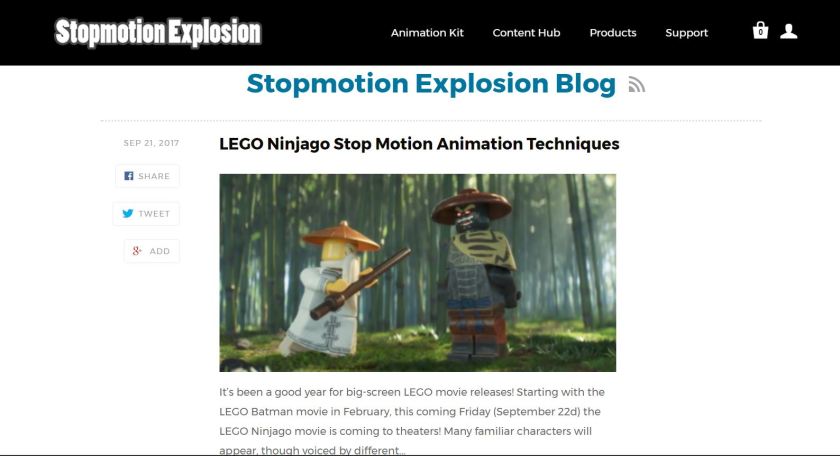Okay, so first off I would like to say that I did a lot of searching for a “professional” blog in this field of work. There are tons of blogs out there but not many are very professional. However, during my searches I would always be brought back to this one. It’s called “Stopmotion Explosion Blog“. Every blog post is both fun to read and very educational. Each post is accompanied with videos to visually explain what they are talking about.
Most of the blog posts I’ve clicked on and read over have helped me learn something new about the stop motion world. They’re all packed with information. For instance, I clicked on a post titled “Feature: Moleskine – Game of Thrones Intro”. In the beginning of the post it talks about how paper can be used as a tool for stop motion animation. Immediately following that is a YouTube video of the work that is being talked about. It is a stop motion version of the Game of Thrones (T.V. show) intro scene. After showing the stop motion they show the original to compare the two. The paragraph following the two videos talks about how they used different lighting and colors to achieve the look they were working towards. At the end of the post they leave us with a video made by the creators of the the stop motion titled “Moleskine – Game of Thrones – Making Of”. That video physically shows us how they built each piece of the stop motion.
In another post, this one titled “Is The LEGO Movie Stop Motion or CGI?”, the author gives us all a question that he intends on answering. Throughout the blog post the author presents their research and makes comments on their findings.

By the end of the post we are given a clear and detailed answer of the initial question.
This blog does not have a traditional comment interaction feature as most blogs have. Instead you are able to use Twitter to communicate with the blog author. As well as Twitter, most of the linked YouTube videos can be commented on and have interactions with the content creators in that way. This blog gives reader numerous different insights into the world of stop motion animation.
By: Tevin Goddard
